1/77 Monogram Trimotor
I was looking for something inexpensive that I could use as a pallet for some painting and weathering techniques that I wanted to try. I found this ancient (originally from the 1950s) kit in my local hobby shop for sale for a few bucks on consignment, so off I went. I wanted to try some light scratch-building, so I added a cockpit interior, an exhaust system for the two outboard engines, the two wing landing lights, and some circular intakes that are missing from the kit. The tailwheel was molded as part of the rudder, so I removed it and scratch-built a new one attached to the rear of the fuselage.
I did a little research on this plane, and discovered they were used for just about everything you can imagine, including a trip to the South Pole. I found that late in their careers some of these planes were used as aerial firefighters, and I was intrigued by how they looked. I wanted to create a model that would have a distinctive paint scheme, as well as a platform for doing some weathering.
I painted and pre-shaded the plane with various colors of Vallejo Metals, and then used AK 3rd Generation acrylics for the wings. I used chipping fluid to get the worn effect on the orange panels. The markings were all painted using masks that I created using my wife's die cut machine that she uses to make greeting cards. I was worried that the corrugations would cause some bleeding under the masks, but they worked perfectly. I was really pleased to find the machine would cut really small markings. The small registration numbers on the tail are only a little over 1mm in height.
This model was a lot of fun to build and weather, and it really brought back the good-old-days when I built this kit as a kid. The full story on this build is located in the Work in Progress Group if you want more detailed info. Thanks for dropping by. Everyone stay safe. Cheers.
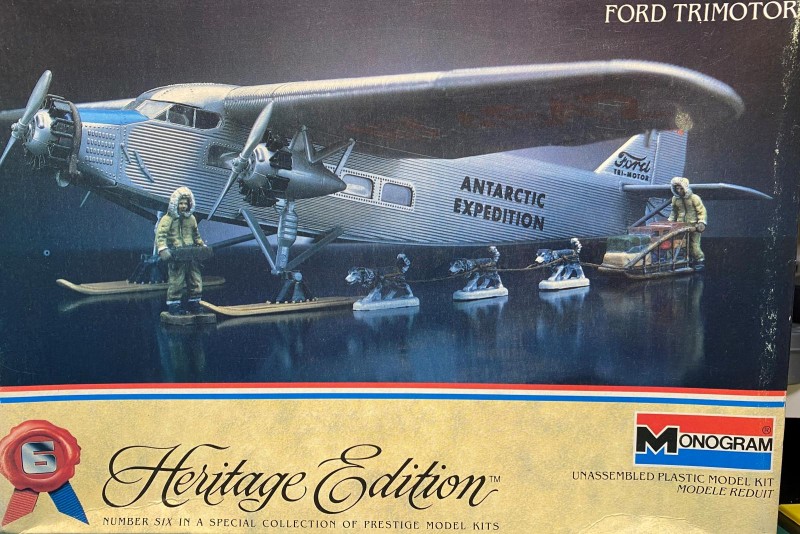
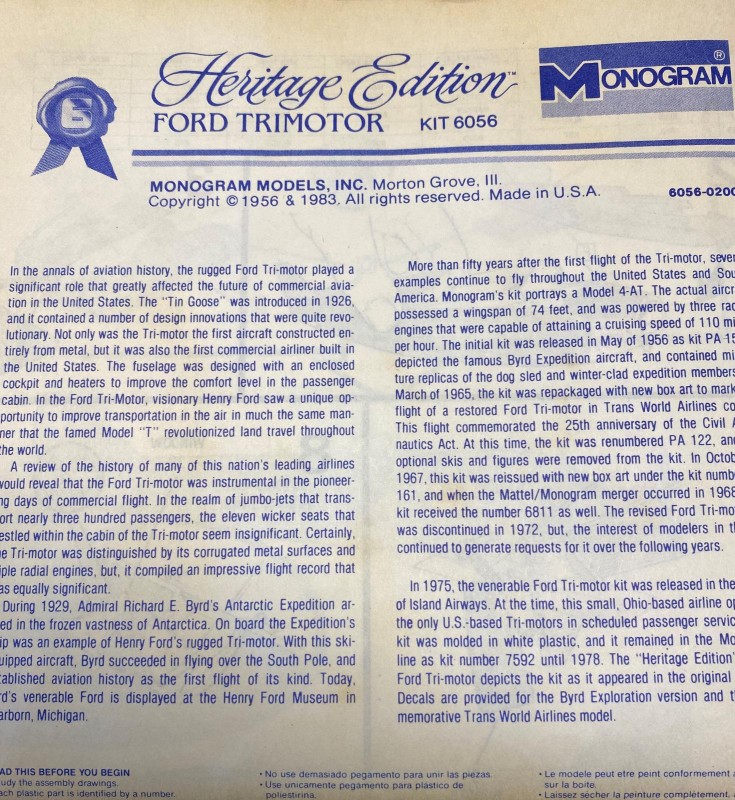
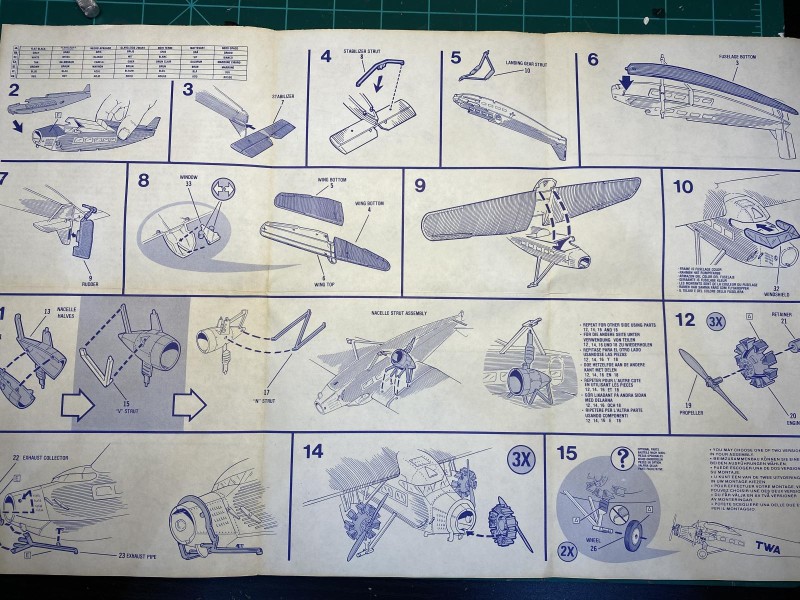
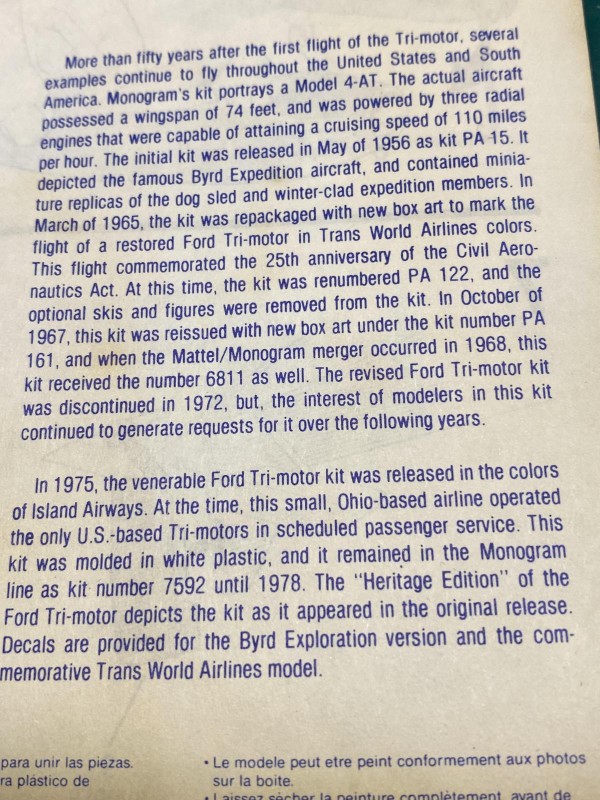
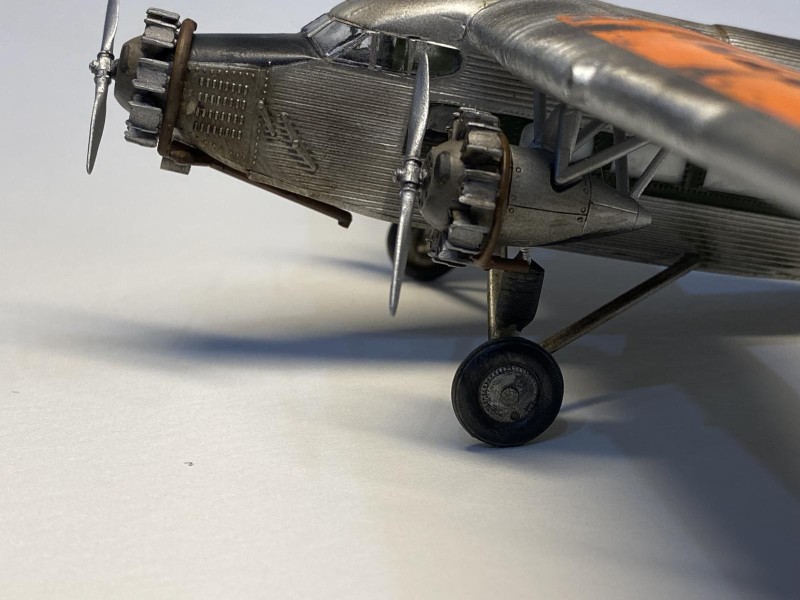


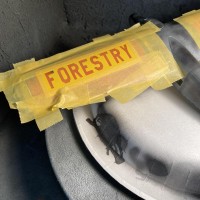
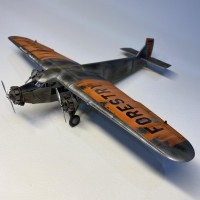
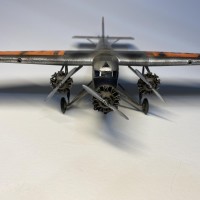
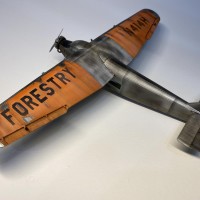
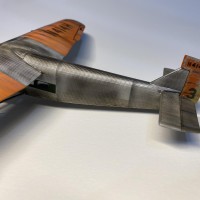
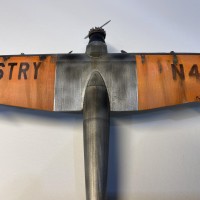
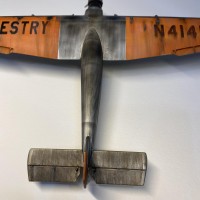
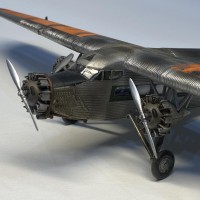
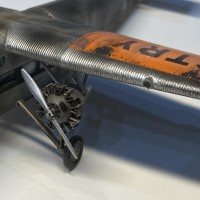

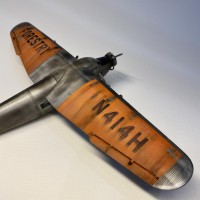
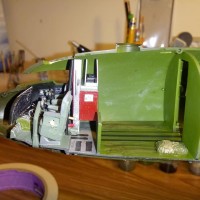


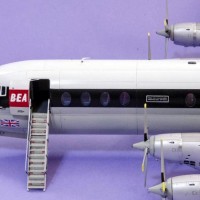
Looks great, George, love the weathering. It looks like she's been around the block a few times, which is as it should be for a working girl. Definitely a like!
Thanks, Jaime (@jetmex). Sometimes I have the most fun building the oldest and least expensive kits, especially old Monogram and Revell.
Agreed, George. Sometimes the simple stuff is the best!
Dang that's nice George. Great work on an old classic.
Thanks, Clark (@clarkcook). This is the most fun I have had building a kit a long time.
Excellent finish to a tough project. Your finish work is exceptional, that plane looks very well worn, and love how you worked the silver shades. You really have made a silk purse, out of a sows ear.
Thanks, Walt (@luftwaffe-birdman). I have religiously avoided NMF until recently. Luckily, all of the expertise for the finish is in the spray can that I use for my metal finishes. Spray cans are like training wheels for NMF. I used Vallejo Metals in my airbrush for the different tones on this kit, which is the first time I have used the airbrush for this kind of work. Baby steps...
George, @gblair
This build was a trip down memory lane for me. I can remember building one in the mid 1970's or so. Mine was the 1975 version, and it had a beautiful Tri-motor from Island Airways. It had a gorgeous Red, White, and Blue plane on the box cover.
I have really enjoyed following along with your build journal. You hit another home run with this one... and I definitely pressed the "like" button. The scratch build alterations you made along the way were a huge improvement. It looks magnificent.
Stay safe my friend.
Thanks, Louis (@lgardner). This was a blast from the past for me also. I remember sticking all of the sled dogs and sled next to the model. This whole build was fun. You approach a kit like this with a different frame of mind than you do a kit that you just paid $100 for. Take care, Louis.
This turned out wonderfully, George!
You started with a classic, basic and inexpensive kit and you created a masterpiece there!
I love all the extra work you did and all those add-ons that have transformed this basic and at places toy-ish looking kit into a fantastic, detailed model.
Great NMF, amazing painting skills and weathering.
The markings were greatly inspirational, as well: kudos to your masks creating!
Your build thread was, as always, an absolute pleasure to follow, nothing less than inspirational.
Congratulations!
What an amazing result, George @gblair
Everything on this build looks awesome, especially the metal finish and the weathering.
It clearly represents the large amount of flying hours she has had.
The markings created with your the cutting machine are great as well, and no bleeding of the paint.
Well done and thanks for sharing the building progress.
Thanks, Spiros (@fiveten) and John (@johnb). I appreciate your kind comments as you followed the build. I'm still not comfortable doing NMF, but I feel better about the finish if I can dirty it up. I really thought that the die cut machine would only be useful for 1/48 markings or larger, so I was really amazed that it would cut small markings for a 1/77 scale plane. I am starting to see some real uses for my wife's machine. Maybe she won't miss it if I "borrow" it. :o)
Looks great! I love these classic airliners, and it is a shame that there are not too many options available if you want to build one.
So fantastic effect of weathering! Your model looks great!
Thanks, Csaba (@pikofix) and @lis. I did a little research for this and found that almost every trimotor was different. It looks like every plane would be customized, especially as it passed to new owners. Plus there are a bunch of different paint schemes that these planes had through their lives. It is surprising that there isn't a more modern kit of this plane.
In Holland was similar plane from Fokker factory. Polish Air Forces had few as transport planes.
I think the Fokker F.VII was a trimotor that looked very similar to the Ford Trimotor, and, of course, the Ju-52 was also a trimotor. They are all cool.
It was Fokker F.VII I think
Great result, George. You tried a lot of new techniques on this one and they paid off. As far as the kit itself goes, I’m really struck at the quality of the tooling for 1956.
Thanks, John (@j-healy). The kit is pretty nice, but their are a lot of ejector pin marks that makes it interesting, like three on three different sides of the front canopy. I was partially successful filling those with some Krystal Klear.
Well done George, you hit this old kit out of the park with both the NMF and weathering techniques.
Thanks, Tom (@tom-bebout). I wanted this old model to serve as a pallet for some trial and error experiments, not the sort of thing you would try on something more expensive.
Everything about this build looks amazing George! The NMF, stencilling and weathering all look fantastic.
Gotta love spraying acrylics and the lack of bleeding and dry times.
Thanks for the kind words, George (@georgeswork). I expected to have some problems with the corrugations when I was painting, but none materialized. I was amazed at how well the stencils worked on the uneven surface.
Came out great, George! Nice stencil work, Now there's two of these in the A-Z contents.
Thanks, Robert (@roofrat). I think a lot of us have built this kit at some time during our life, and I still like building the old Monogram and Revell kits.
Wow, you really did make a silk purse out of that sow's ear, George!
Thanks, Tom (@tcinla). A lot of happy accidents played a role in this one.
It turned out great, George, and the best thing is that you enjoyed building it and experimenting with some new techniques. I definitely enjoyed admiring it.
Thanks, George (@chinesegeorge). It was a lot of fun. I wish some model manufacturer would make an up-to-date model of the Trimotor.
George, great looking build! An airplane that has been around the blocks many times and it shows it. The overall finish came out great.
Thanks, Bob (@v1pro). This kit first came out when I was 5, so I think this kit may actually have come out before there were blocks to go around. :o)
Dang it - I had one of these kits in my stash and sold it off - now I'm kicking myself after seeing what you did with this thing! A real beauty - love the chipping/fading of the orange panels, and the overall paint and weathering work is fantastic. Beautiful work George.
Thanks for the kind words, Greg (@gkittinger). I found this model on consignment for less than $10 at my local hobby store and thought it would make a good pallet for trying some new stuff. I would never have tried some of these for the first time on one of the more expensive kits. Now the more expensive gifts are fair game.
Fantastic build!
Thanks, Cricket (@bikequeen). Glad you like it. I like building older kits, especially ones I built when I was a kid.
My dad built A/C in high school, he had some left over built kits when I was little and I “played” with them a lot….SIGH. Had I only known what I had back then @gblair
@gblair